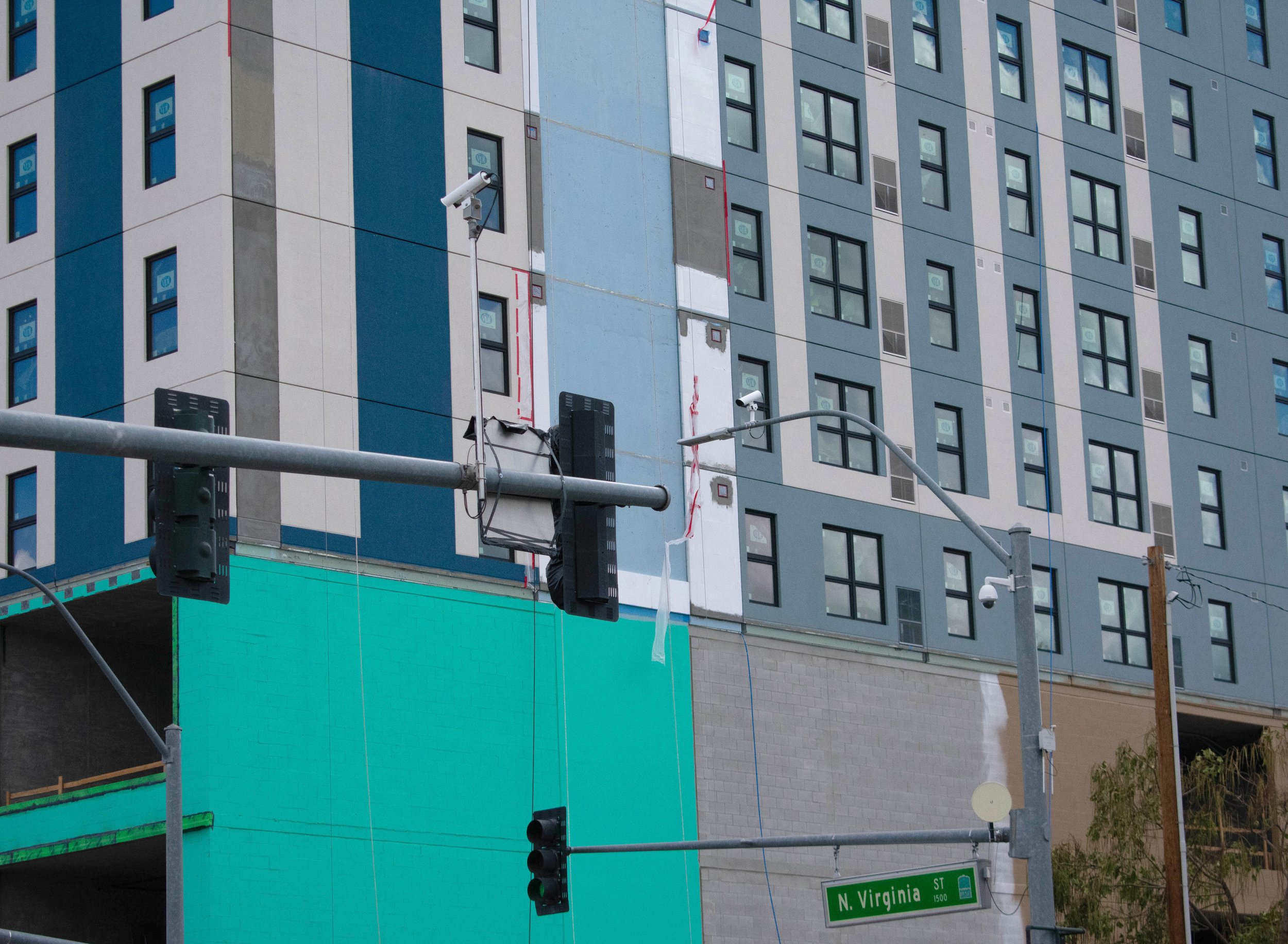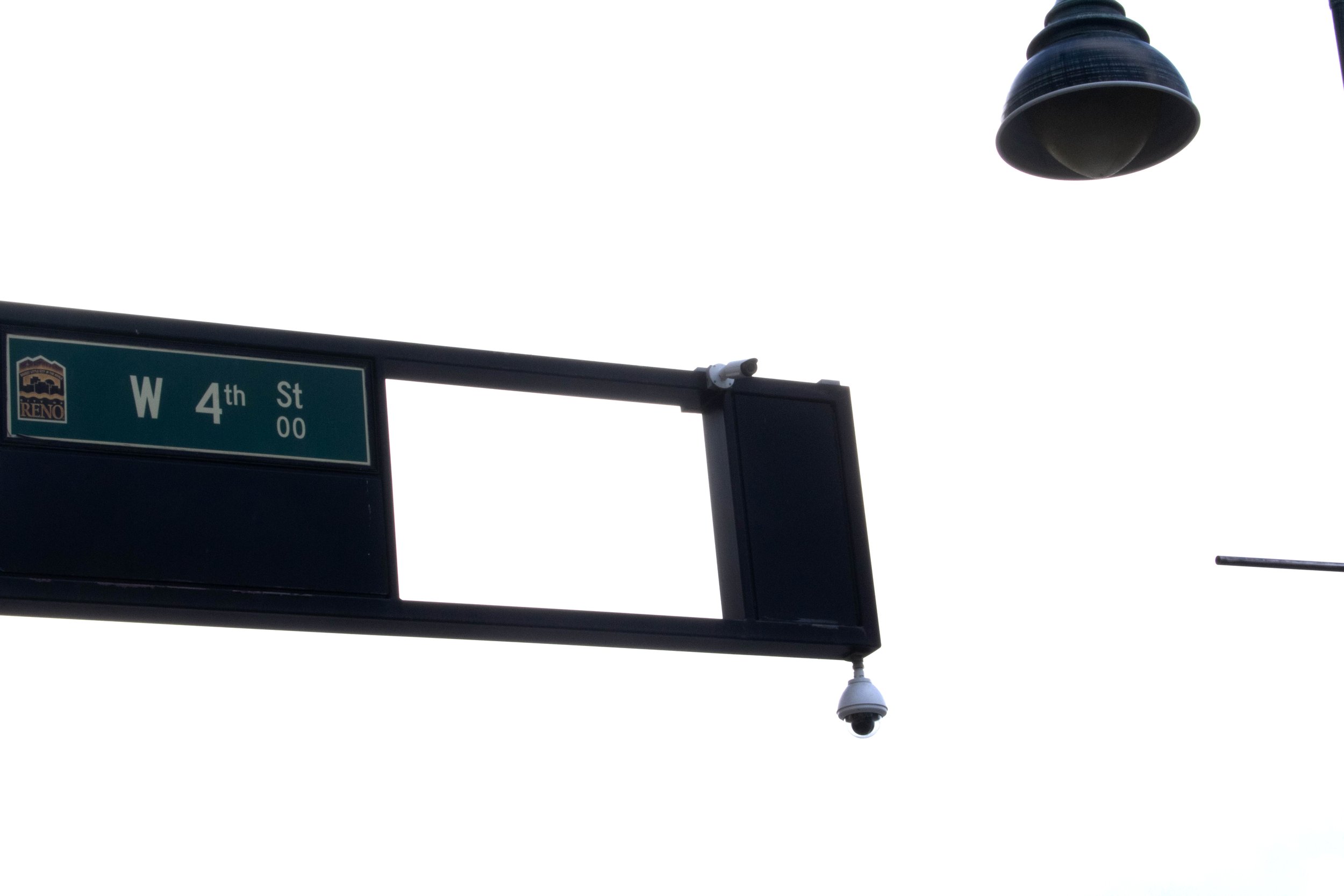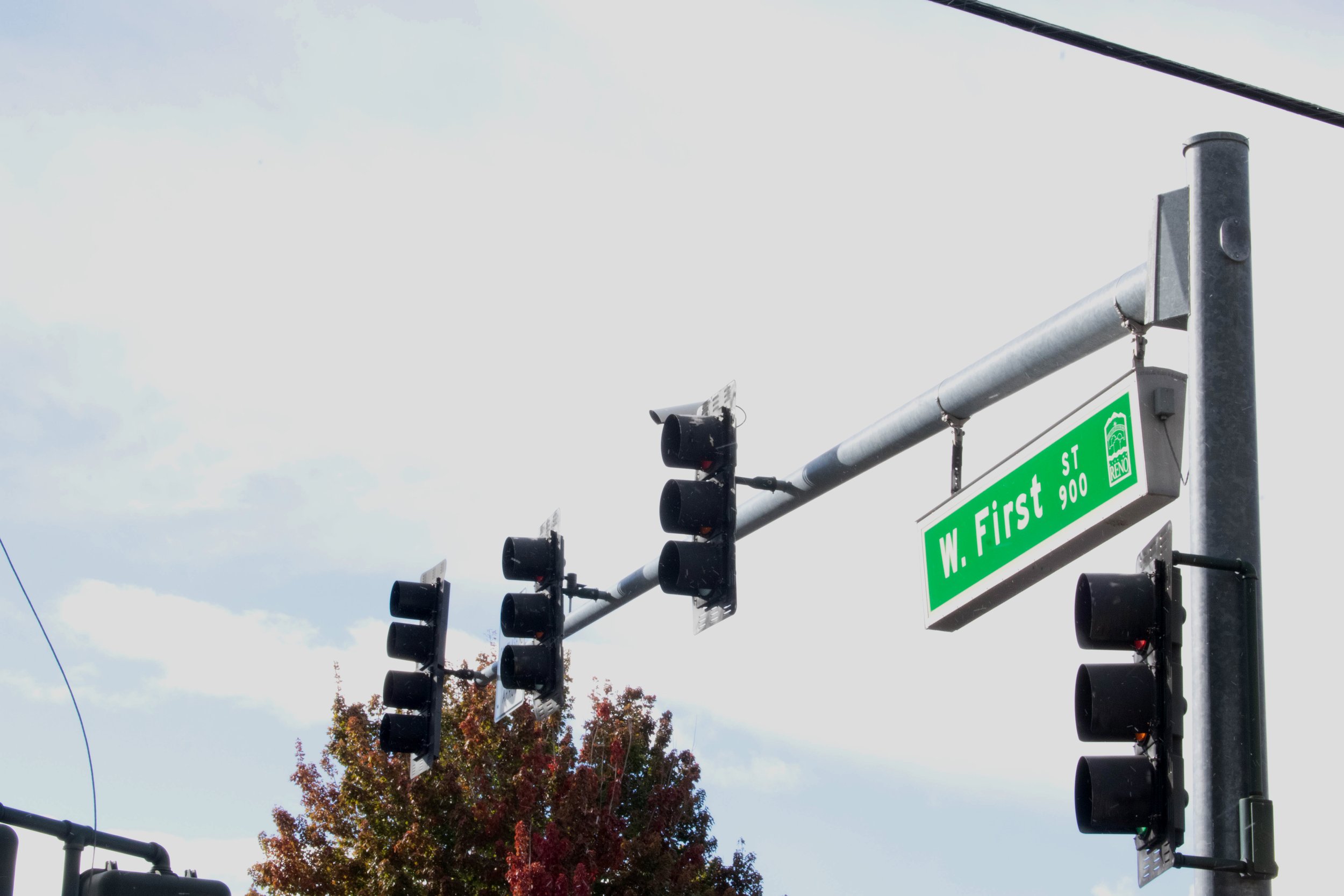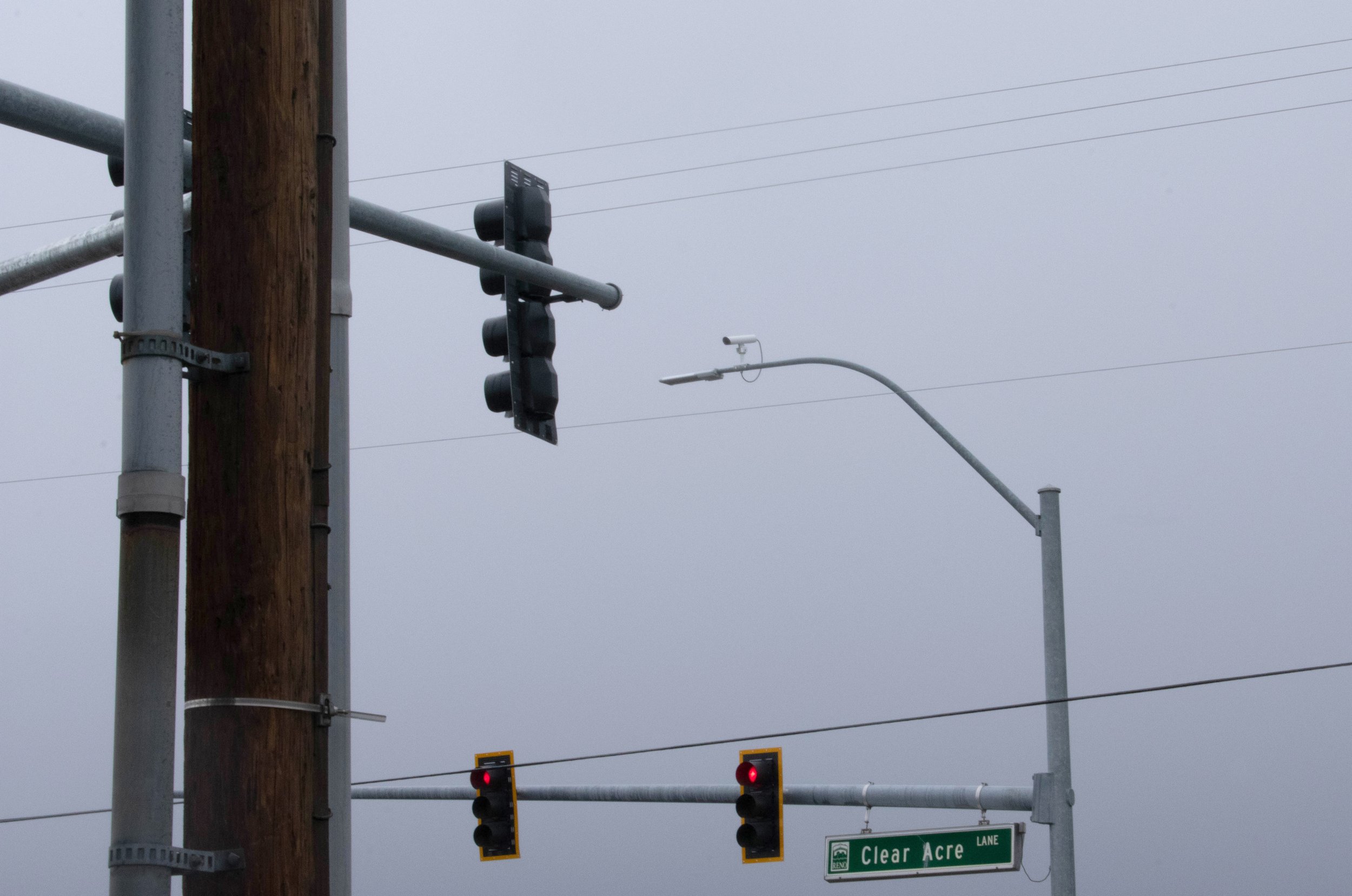At intersections across Reno, it’s common to see cameras bolted to the horizontal bars of traffic lights. What are these cameras for, and what are they watching?
Generally, there are two types of cameras at critical intersections across Reno. Traffic cameras, which monitor the flow of traffic and help dictate when lights should turn red or green, are on type. Usually, these cameras are black and spherical, and appear to be similar to many surveillance cameras used today. However, they do not record video, and thus police in Nevada are not able to use their footage as evidence of a crime, such as running a red light.
The other types of cameras are automated license plate readers (ALPRs). These are white, tubular, and point down towards the street. These cameras take a photo with a timestamp of every license plate that drives through the intersection, giving police the ability to identify and track vehicles. Both the Reno Police Department and the Washoe County Sheriff’s Office utilize ALPRs.
ALPRs can either be fixed on a traffic light or placed on police vehicles, with the Reno Police Department reporting in 2019 they had two vehicles equipped with ALPRs.
ALPR at N. Virginia and 4th. Photo by Michael Rubio.
By tracking Reno’s motorists, this system represents a clear privacy invasion. However, despite this, it’s unclear whether these are effective at all. According to data from 2016 and 2017, of the hundreds of thousands of license plates recorded by the Reno Police Department, only around 0.2% of them produced “hits,” or vehicles of interest to police. Despite this, the Reno City Council approved the use of $117,000 of federal grant money to expand Reno’s ALPR system in 2019.
ALPRs at the intersection of N. McCarran and El Rancho. Photo by Michael Rubio.
Additionally, it’s common for these cameras to have false hits. According to the Brennan Center for Justice, a study from Vallejo, CA, found that 37% of hits from fixed ALPRs and 35% of hits from mobile ALPRs were misreads. Sometimes, these misreads lead to false arrests and lawsuits. In the case of Green v. City and County of San Francisco, police conducted a “felony stop,” holding a woman at gunpoint and putting her into handcuffs after a misread from an ALPR led them to believe she was driving a stolen vehicle.
ALPRs at the intersection of Keystone and 1st. Photo by Michael Rubio.
Also of concern is the sharing of data with other agencies, particularly ICE, or Immigrations and Customs Enforcement. When that $117,000 was approved for ALPRs in 2019, spokespeople for the police and the City of Reno told the Reno Gazette Journal that information from ALPRs is not shared with ICE or other federal agencies. That turned out not to be true, as public documents collected by students at UNR proved that the Reno Police Department was sharing ALPR data with Homeland Security Investigations, a component of ICE, the San Diego sector of the U.S. Border Patrol, and dozens of other police departments across the country.
As of now, it’s unclear how many ALPRs there are across Reno, and where they all are located. A public records request was filed last September in the hopes of determining exactly that, but there has been no response from the City of Reno yet.
ALPRs at the intersection of N. McCarran and Clear Acre. Photo by Michael Rubio.
Ultimately, these cameras record indiscriminately, tracking everyone regardless of suspicion. While it is true that there is no expectation of privacy in public, ALPRs gather data on Reno’s citizens and visitors everyday, with a negligible impact on crime. So, make sure to look up and think about that the next time you drive through an intersection in Reno and the next time you have concerns about local budgets and law enforcement.




